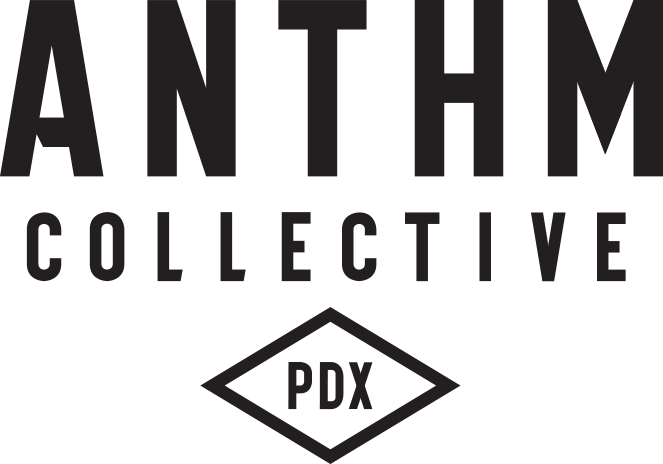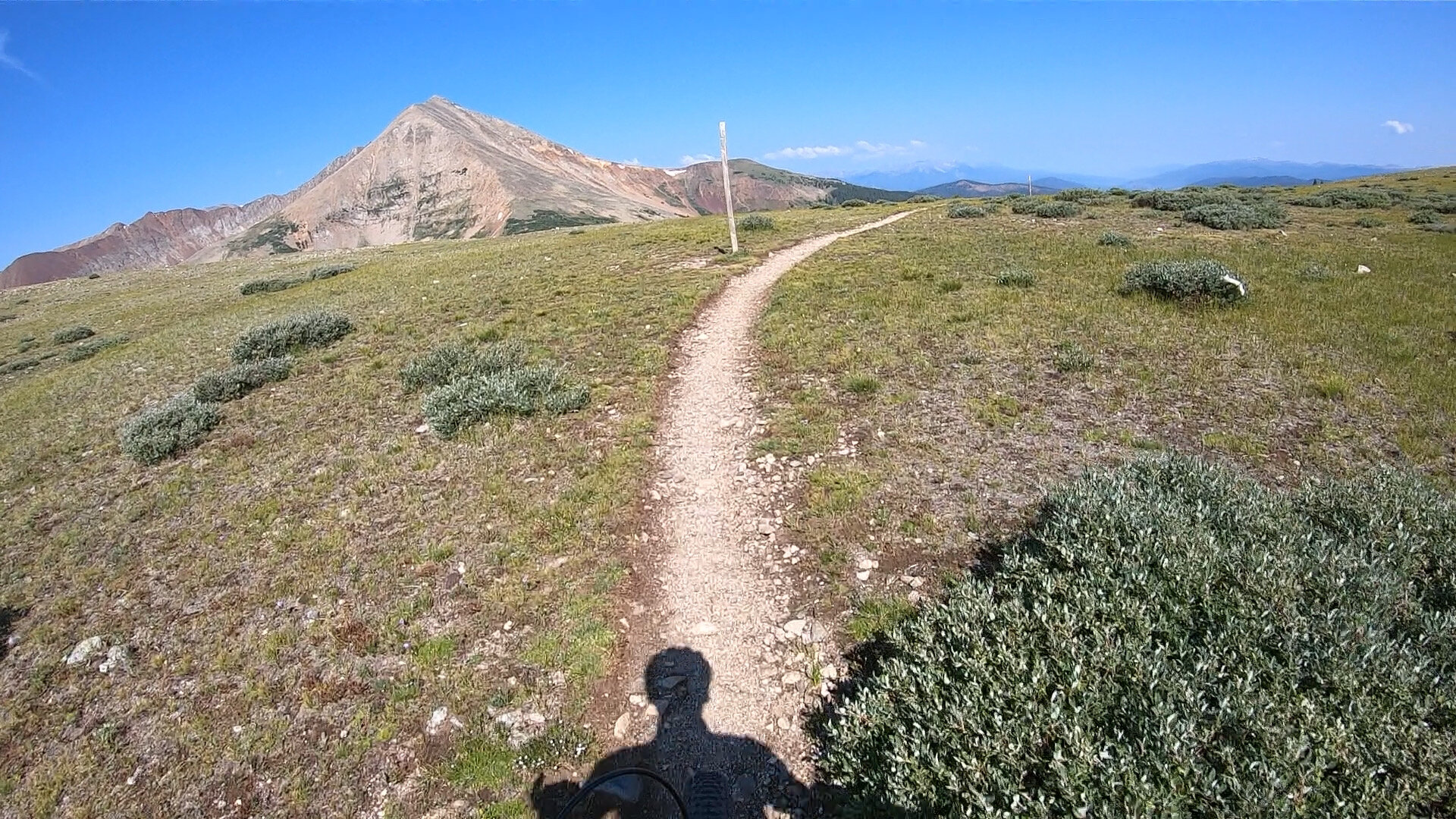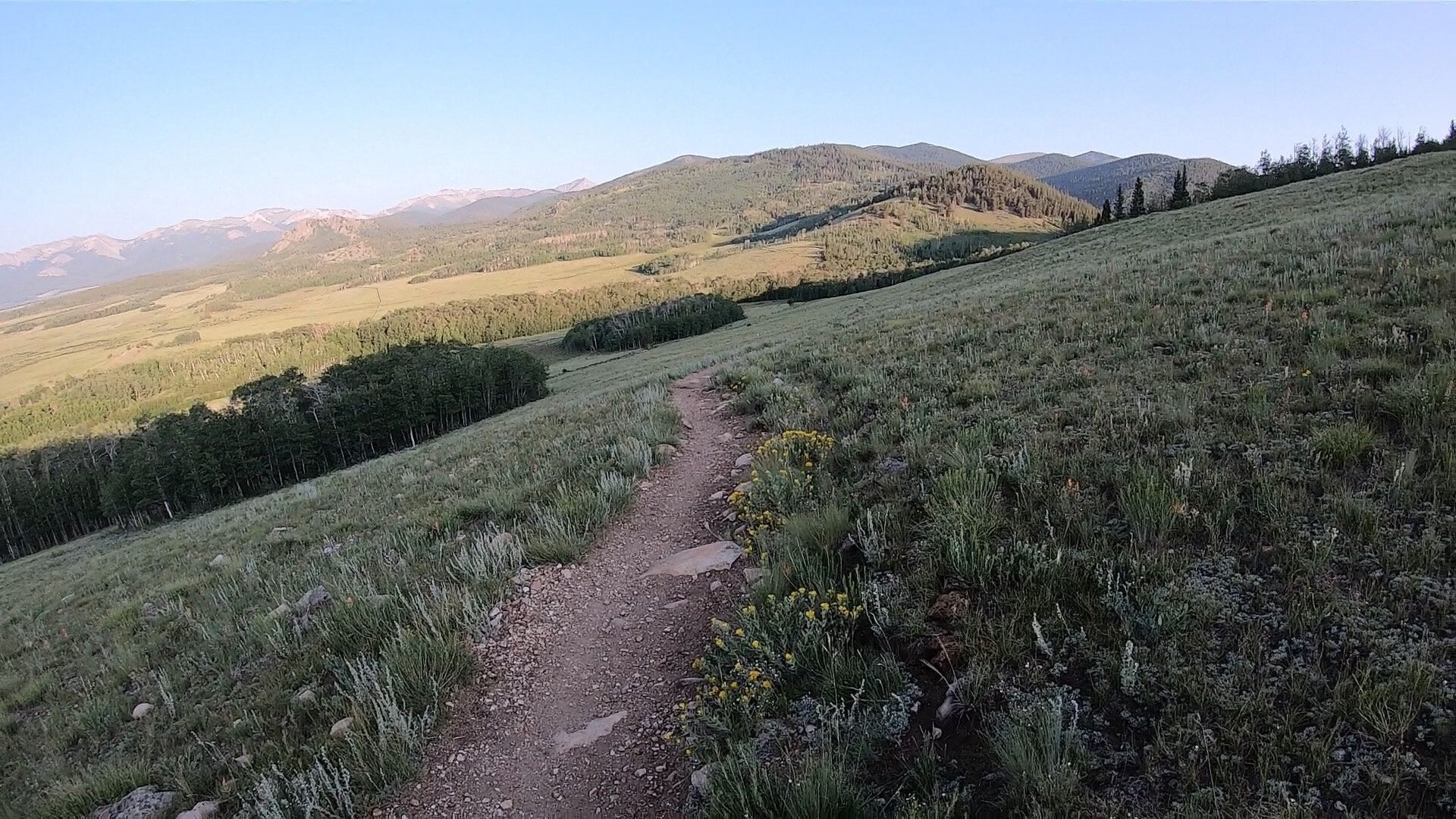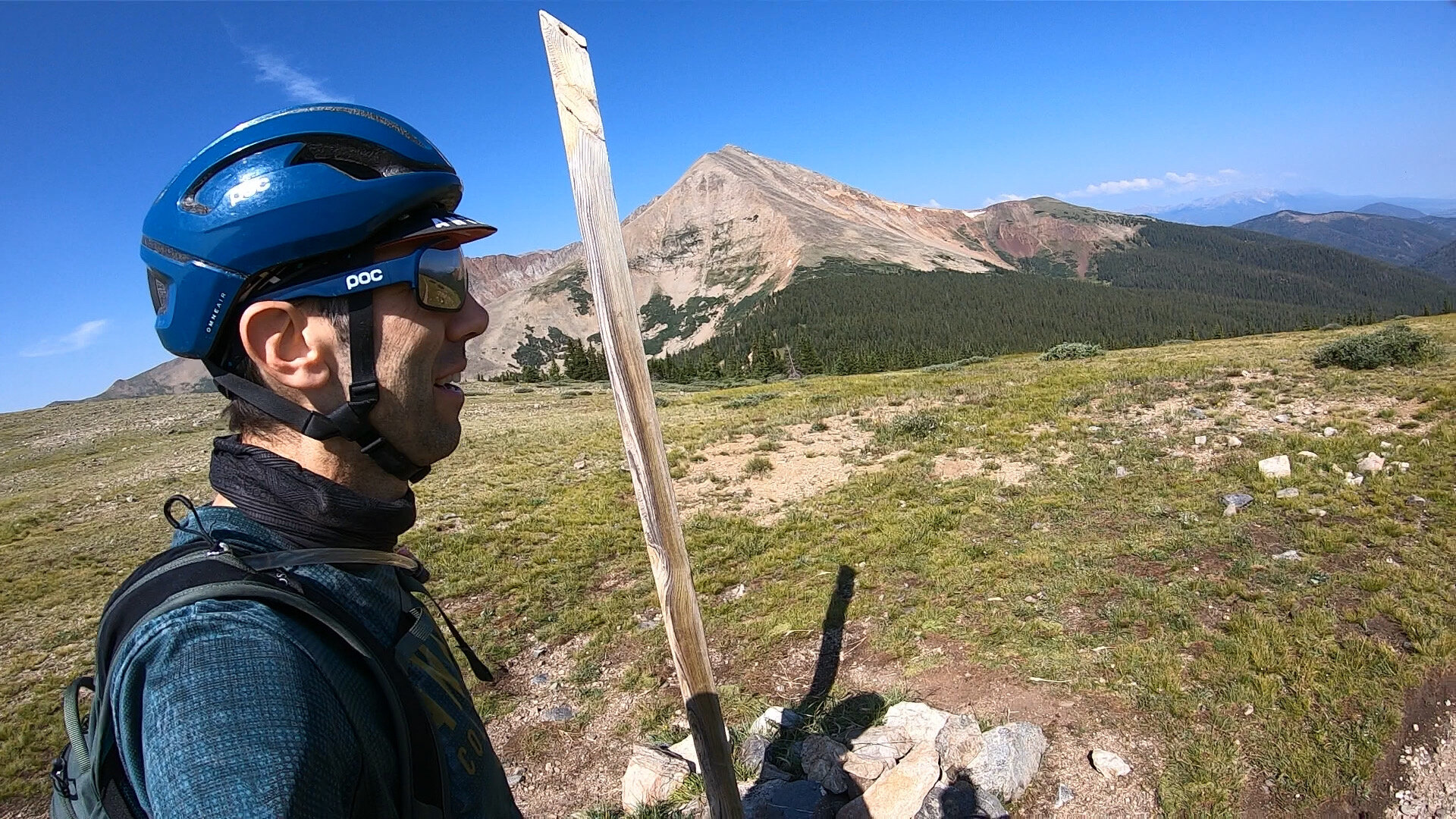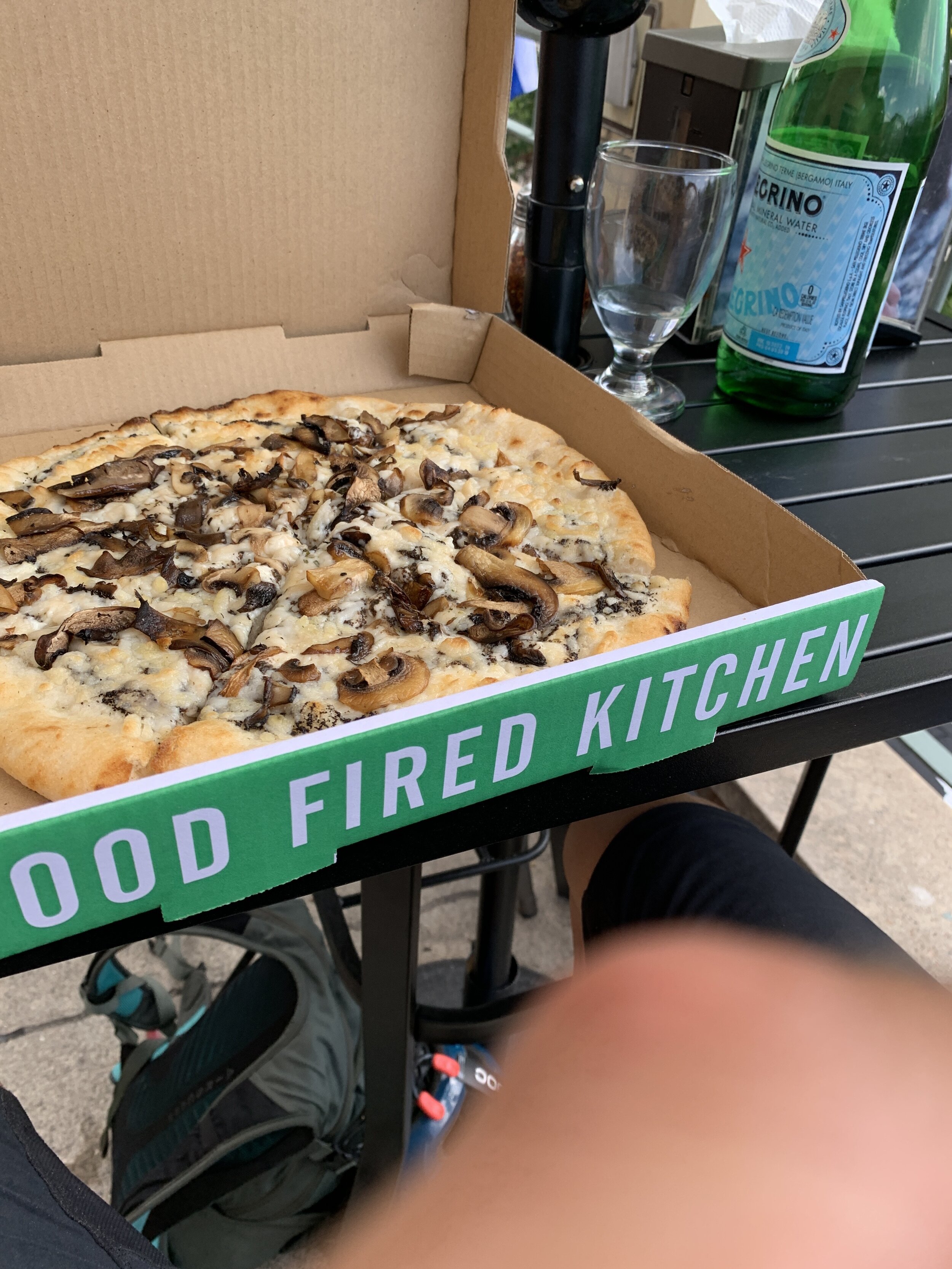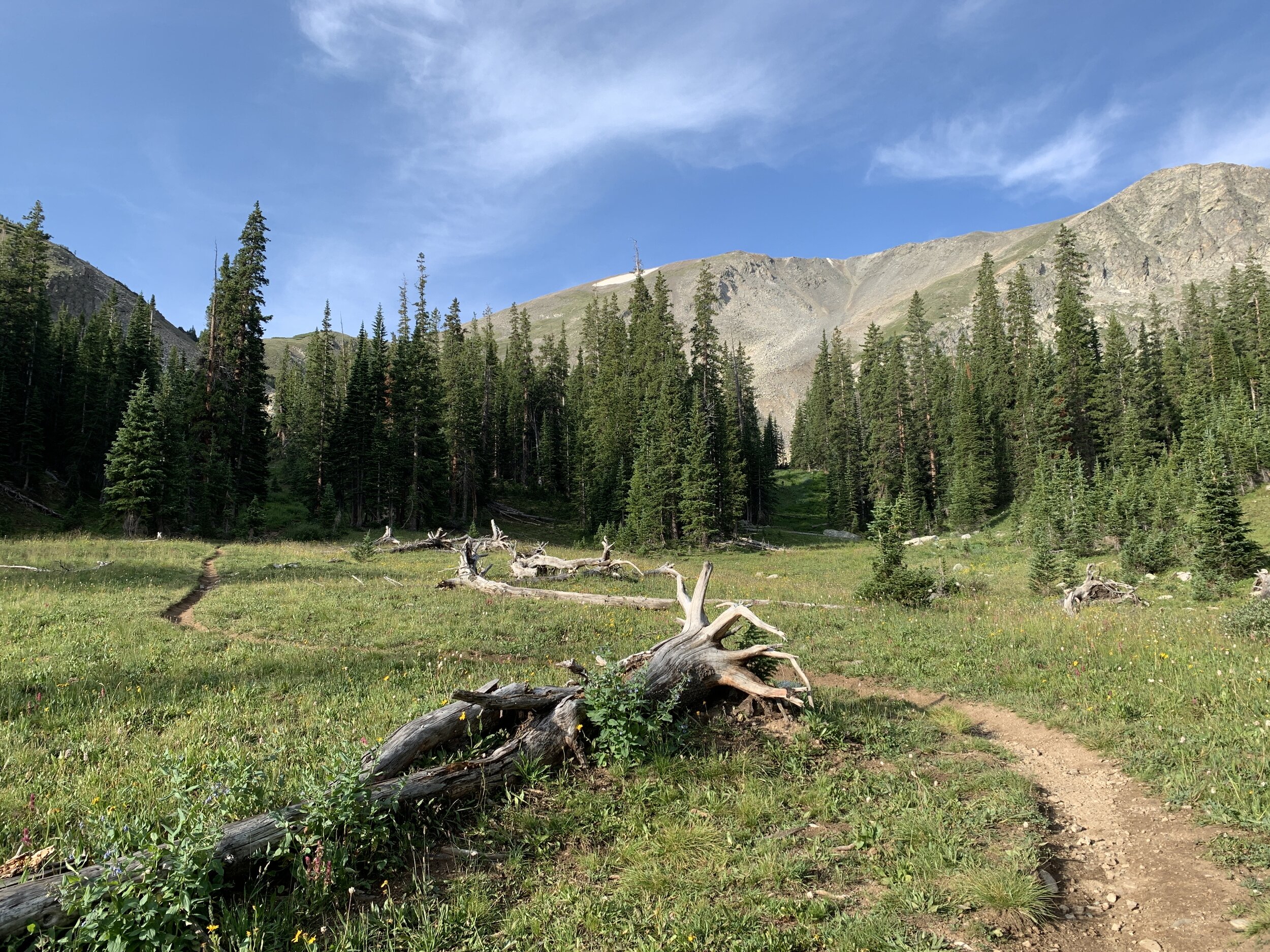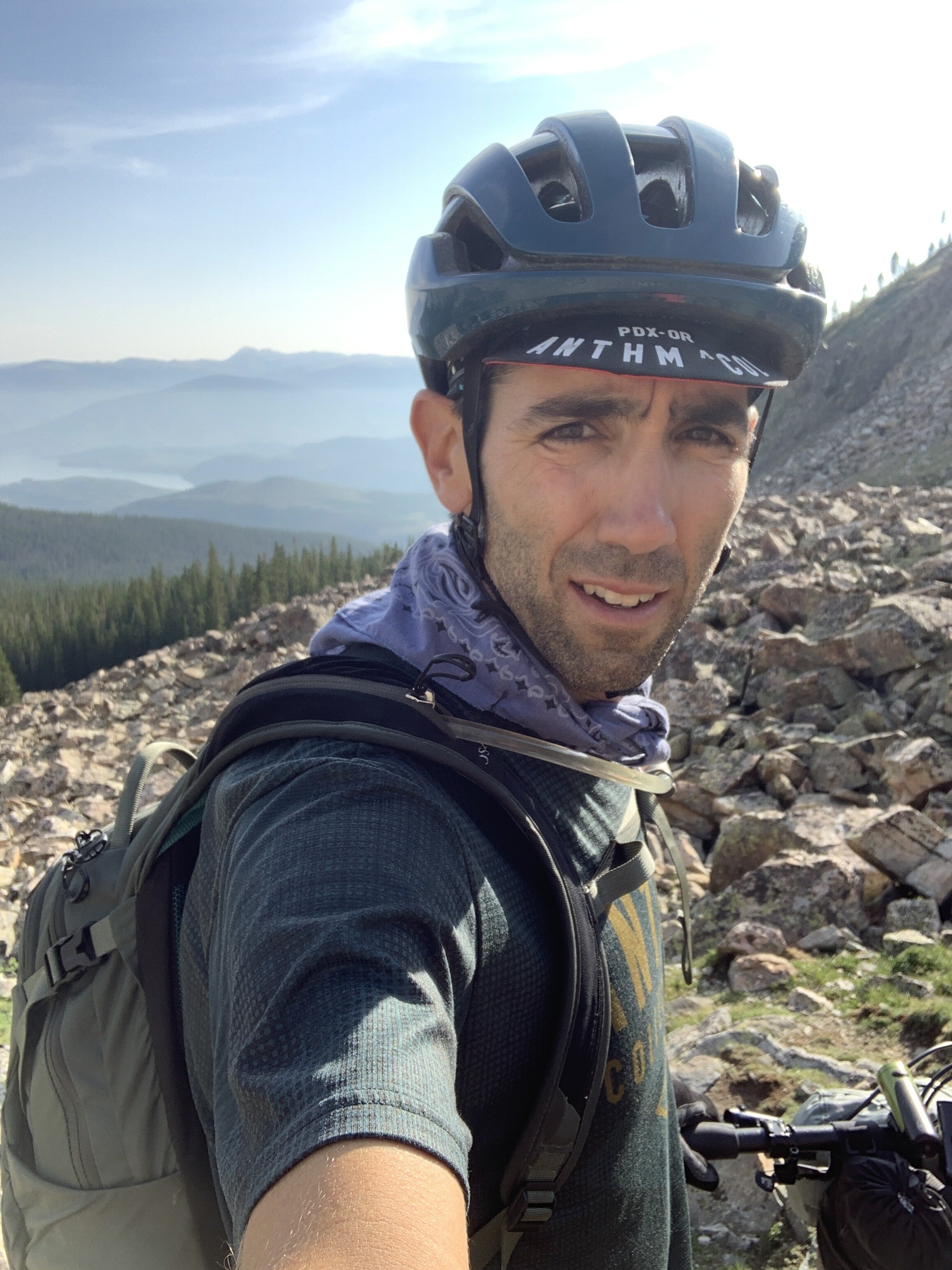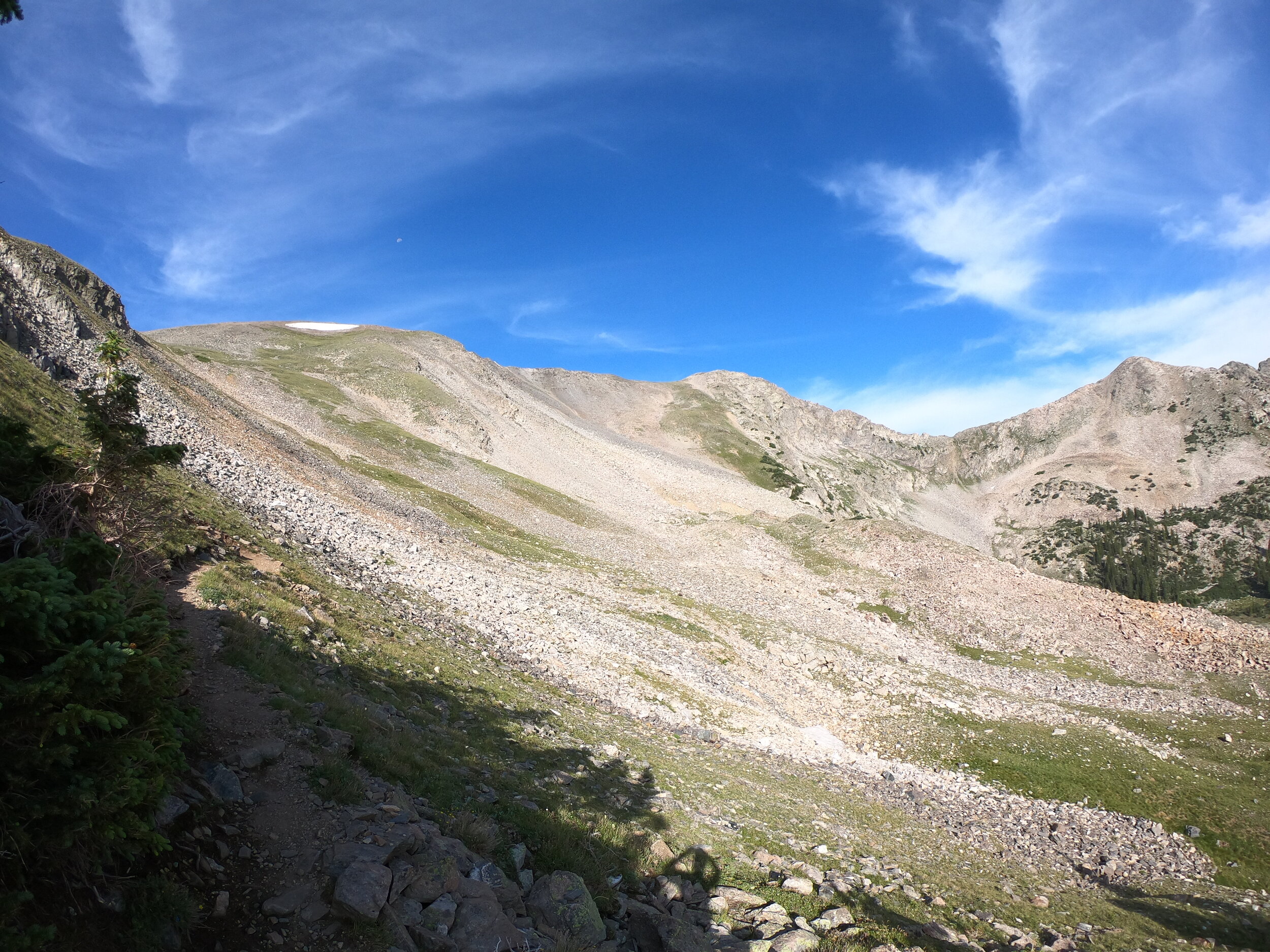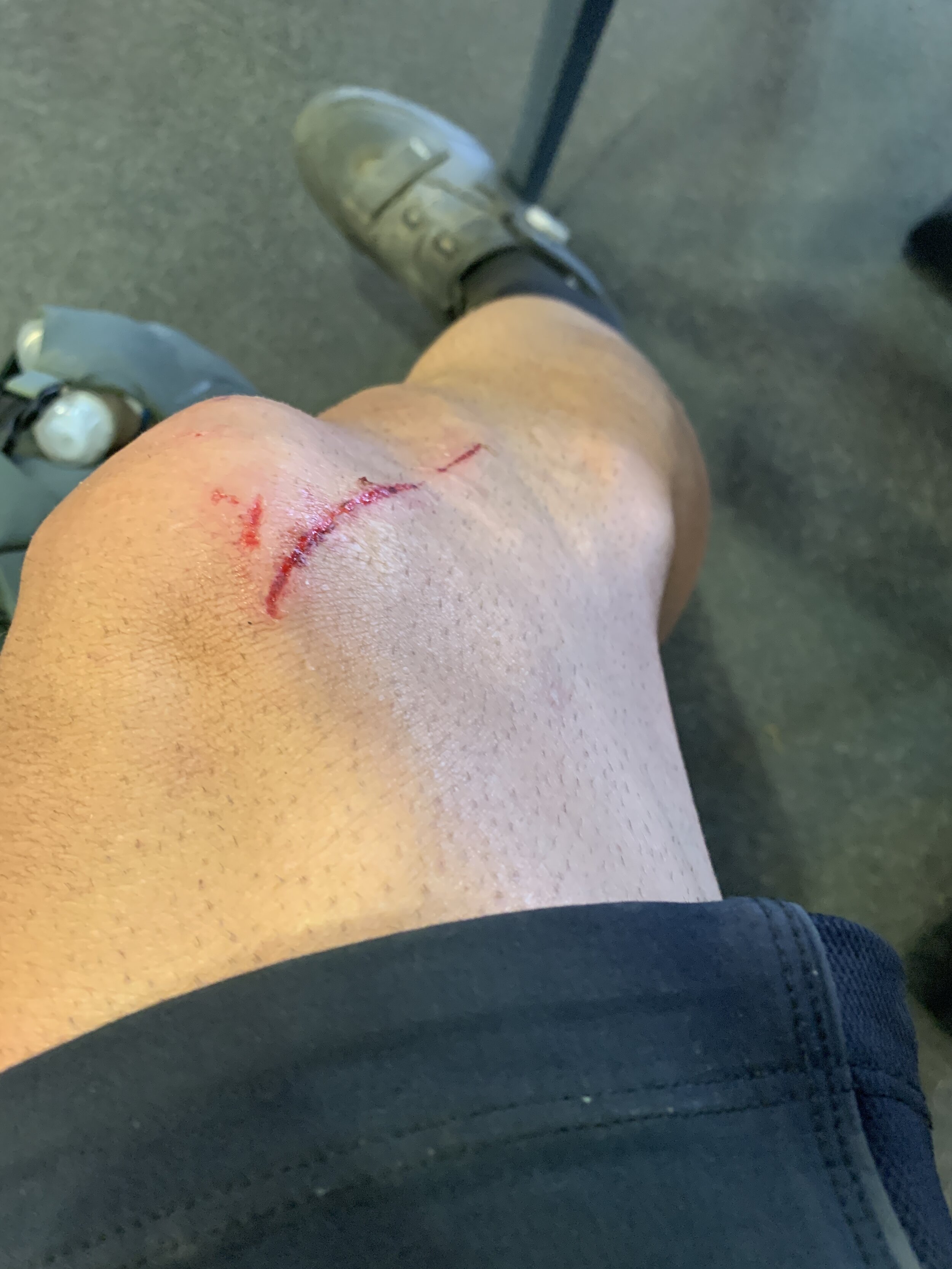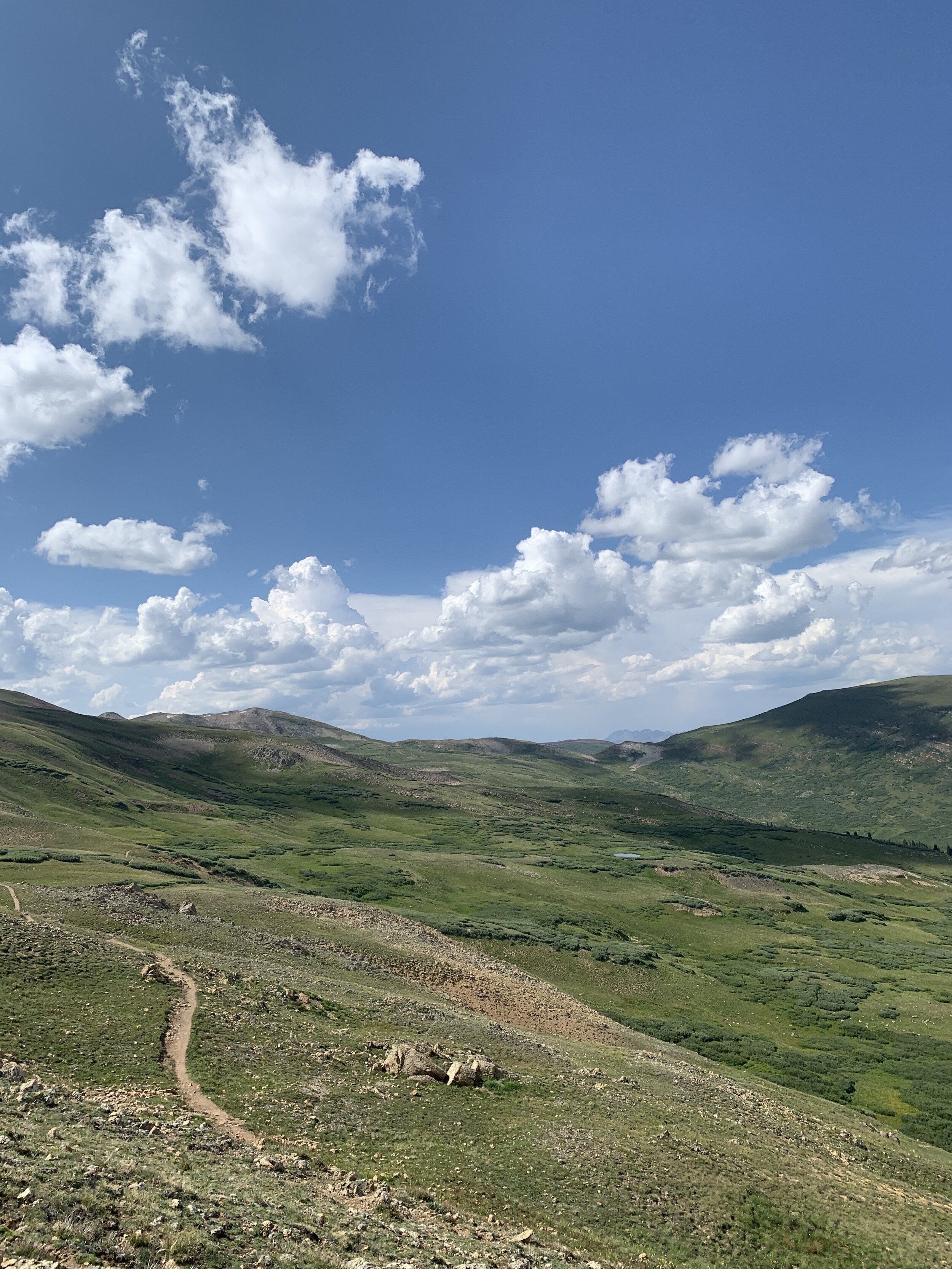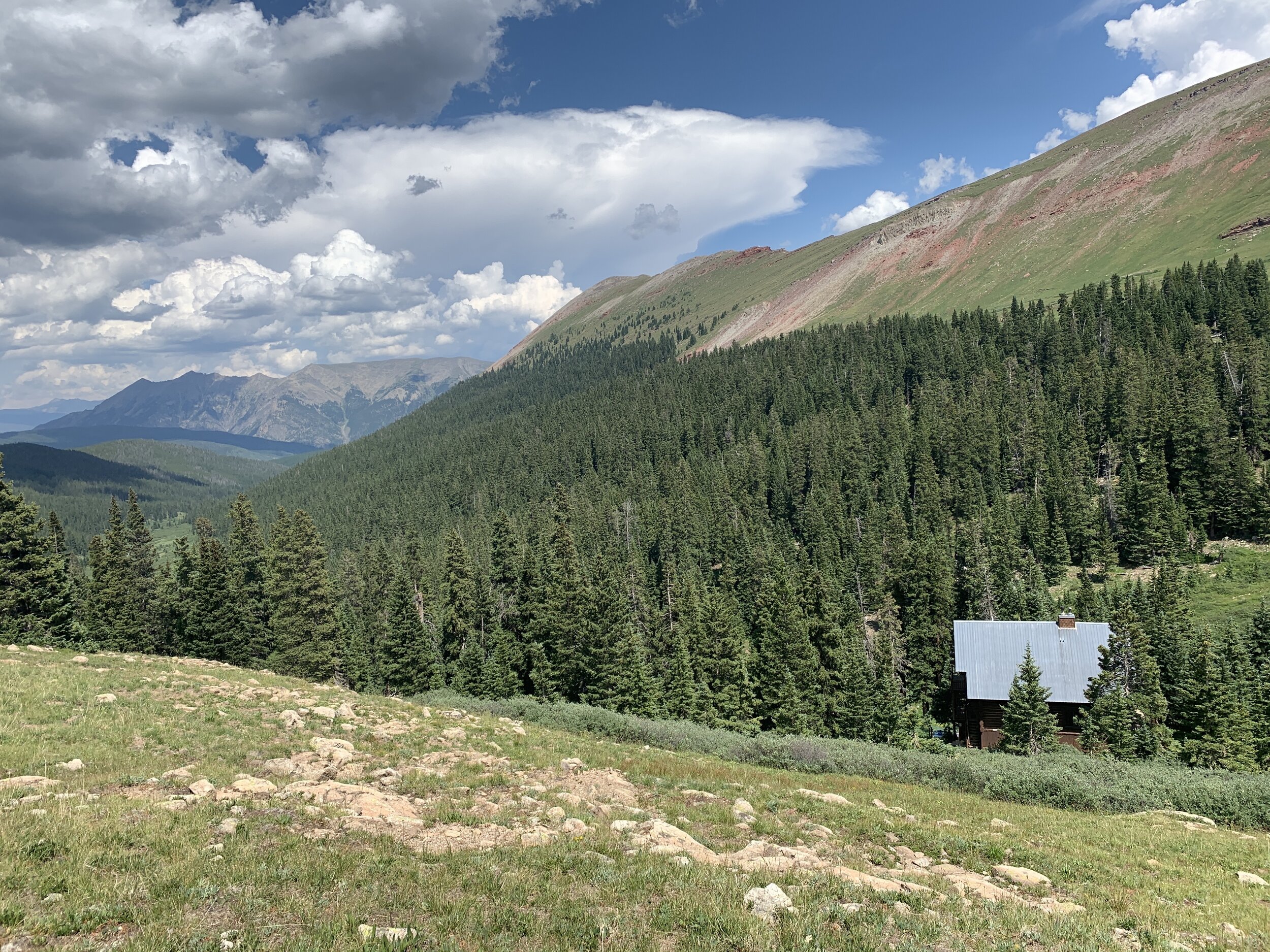The Colorado Trail: 10 days / 10 lessons - Part 1
For the uninitiated, The Colorado Trail is a high country recreation trail connecting suburban Denver (on the Northern terminus) to Durango in the South. The trail crosses five National Forests, five Wilderness Areas (if hiking, bikes are not allowed and require detours) and incredibly, eight different mountain ranges. At the end of July, I was lucky enough to ride the entire route over ten days: 508 miles and 69,000 feet of climbing.
While I’ve heard more than one person call this ride “life-changing”, I don’t think this necessarily applies to me. I do however, understand the sentiment. I have certainly been altered by the experience as it was simultaneously the hardest thing I’ve ever done, and one of the most rewarding.
So how do I recount a trip by which I will measure all future difficulties and discomfort, beauty and vastness? I gave myself some time following my ride to digest this question, get back home and recover before trying to answer it. I will try tell it as I hope to remember it, through lessons and themes, boiling things down to 10, one for each day of the journey. The lessons often correspond with a trail story, a highlight, or maybe even just a random thought that stuck with me. Here you will find the first few.
1. Setting Forth: Start with Why.
Riding the CT in its completion has been a four year process.
I’d made my first plans in 2018, but a month prior to riding it, the 416 fire exploded and closed much of the route. Plan B was to ride the Oregon Timber Trail which also came under the cover of smoke from fires which I wrote about here…
A year later in 2019, summer was slipping through my hands and it was September when the itch for some big adventure became overwhelming. I began the CT at the end of the month, which was only one of many mistakes that led to me abandoning after 7 days. Trip Report
In 2021, I knew I would go back. The question was, how would I approach it? The CTR (Colorado Trail Race) would be happening at the same time, so maybe I’d jump in and race the route. Or maybe do it as an ITT (Independent Time Trial) Southbound, or perhaps just a fast tour? Ultimately, I stepped back and asked why I was doing this at all? I knew I wanted to get on the trail with a different mind-set, a different bike setup, a stronger body, and adjusted expectations. But the question Why?
The answer was fairly simple. To finish. To spend time in the high mountains. To push through difficulty in whatever form it would arise and to be clicked-on to the present moment, for an extended period of time.
Rider and author - Brian Anthony
Waterton rams sending us off with a display of power.
2. Listen to wisdom:
The CT begins with a 6 mile gravel road before turning to single track. I was fortunate to have my friend Kyle join me for these early miles as we snaked along the river and got to see the rams put on a show for us, sending me off with a bang! At the end of Segment 3, cyclists are forced to re-route around the Lost Creek Wilderness. The official detour at this stage is known as the Taryall Detour and requires 70-ish miles and over 8k feet of climbing before re-joining the CT at Kenosha Pass. Alternately, there is an option to head North to the town of Bailey, 8 miles away and then ride the 285 highway to Kenosha Pass. This saves significant climbing, many miles, and most importantly, a solid handful of hours. But it comes at a price.
My good friend Pete, a CTR veteran and sub-6 day finisher, told me “don’t do it”, and “if you do, bring a 3’ pool noodle”. (the pool noodle is attached to the bike and extends toward the lane of traffic so cars understand that’s how much space the should give. I thought he was kidding, until I saw one laying in the ditch along the way)
Having a fairly high tolerance for sketchy roads, I decided to go against his advice. The initial 8 miles to Bailey were some of the most unreasonably steep roads I’ve ever ridden, and the vege-burger and fries I scored in Bailey were not enough to offset the grueling day’s total 73 miles and 10k of climbing. I’d made it to Kenosha Pass on Day 1, but the seared lungs, toasted legs, and frayed nerves were NOT worth the time savings.
My tactics were at odds with my reason for being there, and I paid the price. The lesson? Listen to wisdom, and then put it in to action.
Sunset at Kenosha Pass on night 1.
3. Let go:
I’d already ignored wisdom and been inconsistent with my Why, so it should come as no surprise I continued my blundering by setting an ambitious schedule for Day 2. The plan was to get up and over Georgia Pass, skip the Breckenridge re-supply, climb Gold Hill up and over the 10-mile Range and end in Copper. If everything went well, it was doable without riding into the night.
Georgia Pass is really exciting to me. It feels like the gateway to the big mountains and is the first of countless mountain passes over 11,000 feet. Grown-in scrub brush and wildflower lined meadows give way to aspen groves. Several miles of heavily rooted and wide trails finally deliver you to timberline where the trail is rutted, narrow, and relentless. Upon arriving at Georgia Pass, you could be duped into thinking it’s all downhill to Breckenridge. There is, as we quickly learn on the CT, always more climbing. 1,800 feet of it to be precise between Georgia Pass and Breck which could easily be overlooked based on this segment profile.
Georgia Pass at around mile 22, Breckenridge access at mile 32
It was somewhere in this 1,800 feet of climbing where my third lesson would arrive, in the form of a distressed hiker sitting on the side of a particularly steep pitch of the trail.
hiker - “Hey man, do you have any extra food?”
Apparently, he’d mis-judged what he needed to get to the road where he could grab the bus into Breck for his re-supply and was completely broken, out of calories. I too was riding the fine line of having enough calories. The difference being, I wasn’t going to Breck, I was skipping the 8 mile detour and heading straight to Copper. I did some quick math to calculate the hours left to ride, how much food I could part with and still stay on track, and I gave him my two remaining gels. This left me about 500 calories and an emergency dinner in case I didn’t make Copper. He was grateful, but I could tell that with 5 miles to go and a heavy pack, he wasn’t confident in his situation.
I rode on for 10 minutes before it sunk in.
“What was I thinking?” I began getting very frustrated with myself. Was I seriously putting some arbitrary itinerary ahead of someone in need? Sure, other hikers and riders with food would be along. He’d be fine. But would I? As I struggled with the fact that I got it wrong, mid-self-flagellation, I came across a pair of thru-hikers. I explained the situation and (with the bar they contributed) left my remaining food in a little pile on the trail where he’d be sure to find it. I thanked them, and feeling ever so slightly redeemed, turned my attention to riding to Breck.
After a tough morning of technical climbing, I used the cruiser bike path into town to reflect. It wasn’t just about letting go of arbitrary goals (Kenosha Pass to Copper in a day), but letting go of being hard on myself for the mistake, for not doing more for the hiker in the first place. I’d need to stop flogging myself in order to move on with a good mind-set, a process greatly aided by the vegan pizza and loaded up feed bags I would get in town.
It was only day two and the lessons were stacking up. This one in particular, I’d re-visit again before the trip’s end.
4. Bikepacking solo: Life as a Rock Garden.
When people have asked about this trip, invariably they ask if I did it solo. When I respond that I did, there were two very different responses. One tended to be a simple nodding of the head, an understanding, a contemplative internalization as they no doubt imagined how they would manage solo in similar circumstances. The second was, “Oh, hell no!” I always find this the more interesting response.
Some say “hell no” out of very practical safety concerns, lack of experience, or confidence that they could make decisions throughout a trip without having input from someone else. I fully get that. But some say it because they just wouldn’t want to be alone for that long, which I understand, but can’t really relate to. To be honest, I never felt terribly alone (except that one night in the lightening storm, but that’s a story yet to come).
You see people on the CT. Thru-hikers, CTR racers, day hikers when you’re near towns, sometimes even a horse rider or moto rider where they’re allowed. In fact, I camped within shouting distance of others on more nights than not. But this doesn’t change the fact that when you set out alone on the CT, you are taking on risk. You are the only one who is looking out for you. As a result, you have to make adjustments. I take a more conservative approach to my decision-making, the amount of night riding I do, I always hang my food to keep bears and critters away, I watch the weather, and try to back off how aggressively I ride. So why, given all these things I do, did I find myself flying over the bars in the middle of a rock garden as I descended off the 10-mile Range between Breckenridge and Copper? Good question.
Let’s conjure up Pink Floyd and call it a “Momentary Lapse of Reason”. Honestly, the stoke got the better of me. After a stunning morning of climbing up 10-mile and taking in the views, I was ready for the rowdy descent and a cup of coffee in town. When I dropped into the chunk, I rode it as if I were unloaded and payed the price. HOW I didn’t get more banged up, I have no idea. I’ll chalk it up to a lifetime of falling down…I’m pretty good at it. I bruised my quad and got a few deep lacerations (new scars for the collection), but really, I got SOOOO lucky.
After re-grouping and continuing on, I saw a few CTR folks on the hike-a-bike heading up and boy, they were NOT enjoying that bit. I got myself into Copper without further incident, did some first aid on the cuts, and set down to an insanely overpriced coffee, breakfast burrito and Gatorade. That’s when I began thinking about “Life as a Rock Garden”.
Rule #1 when learning to Mountain Bike is look ahead. If you look at the rock, you’ll hit the rock. Look passed the rock, through the rock(s), and you’ll be smooth as butter. But, just because you don’t LOOK at the rock, doesn’t mean you don’t SEE the rock. You have to maintain an awareness that the obstacle is there without being so fixated on it that you run directly into it. How is this a metaphor for life? To me it works a couple ways. When it comes to obstacles, it’s fairly obvious, look to the solutions and not the barriers, but have a solid awareness of the things holding you back. But in a different sense, it’s about equanimity. Seeing, appreciating, and experiencing the current moment while following a chosen path (even when that path is a metaphorical rock garden) is fulfillment. This is the clean line, this is being present and it’s the reason I was there in the first place. My rattled and adrenaline depleted body was reminding me with twinges of pain and a bit of blood, see the way forward, but don’t miss a single second, even if it means walking a very rideable rock garden. Because there is still, so much to see.
The rest of my third day was sublime. The climb up to Searle Pass from Copper is one of my favorites, followed by the high traverse over to Kokomo Pass and then an incredible 6 mile descent down to Camp Hale. I would pass more CTR riders, including Alexandra Houchin who would go on to win on her single speed. I gave her a fist bump and told her how inspiring she is (my little brush with stardom). Next up was the climb to Tennessee Pass and an evening cruise into Leadville where I would spoil myself with a huge Mexican dinner, sitting outside, and answering questions from passersby while I enjoyed my meal. There’s nothing like the wonder people express to make you feel like you’re doing something exceptional. With belly full, it was a 13 mile night ride into BLM land and road-side camp.
I had put a significant dent in the overall mileage, but rumors from the trail ahead told of monsoons, landslides, and brutal conditions. I felt good about my progress, I was over a day ahead of my previous attempt, but I also knew that what I’d ridden to this point would soon be overshadowed, and I would be tested in earnest.
Continued in Part 2.
